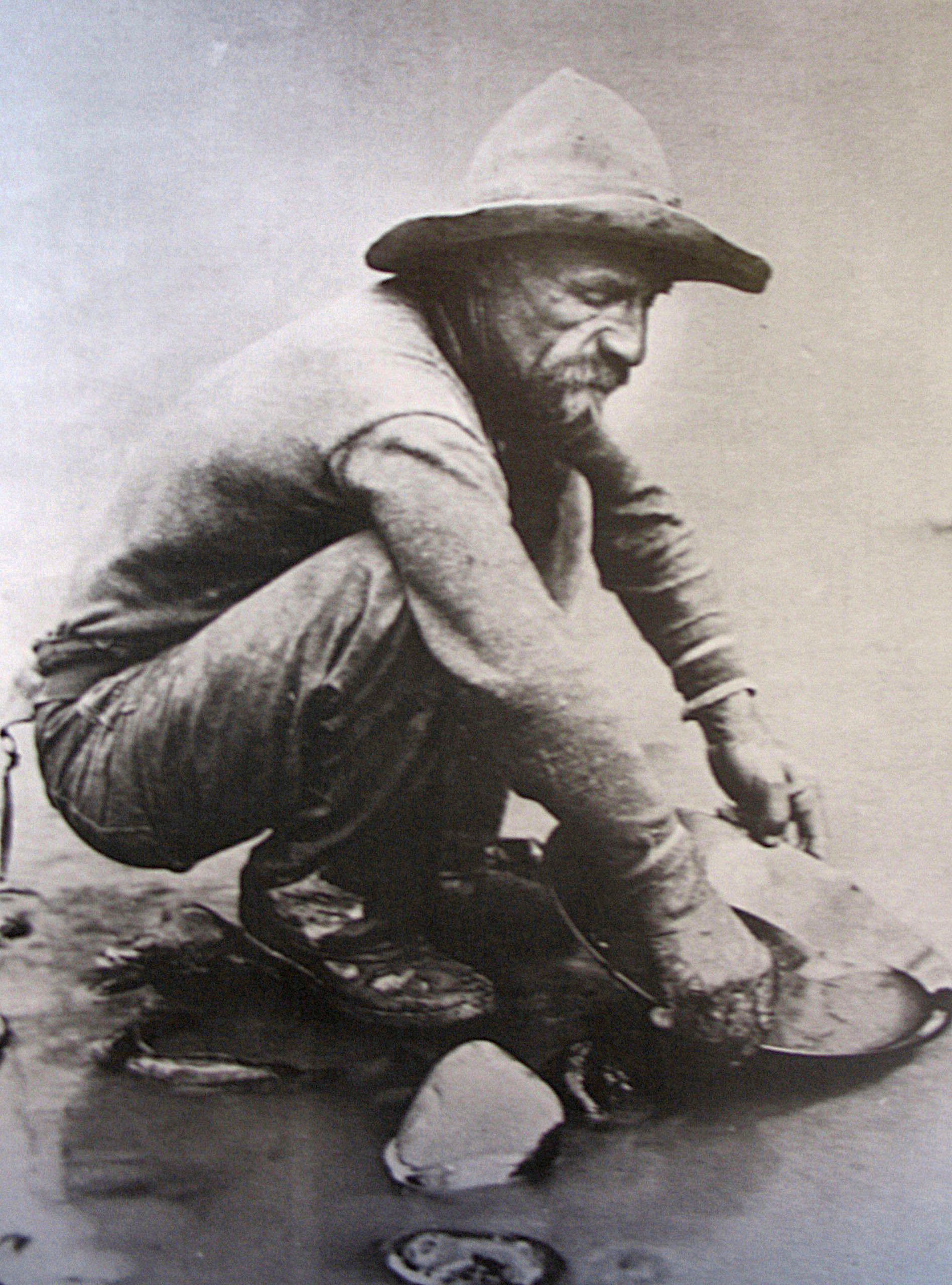One January day in 1848, a man named James Marshall was inspecting a saw mill under
construction for his employer. Suddenly he noticed an unusual rock sparkling in the
overturned earth. Was this a nugget of gold?
Marshall tried to break the rock with a hammer. It didn’t crack, but it dented… like gold.
The woman who cooked for the saw mill construction crew threw the nugget into a pot of
lye. The rock boiled for a day, but it did not change color... like gold. Then the mill’s
owner, John Sutter, conducted a few tests. Everyone agreed: this was gold.
Where did the gold come from? The Sierra Nevada Mountains held stores of the valuable
metal. Over tens of thousands of years, erosion had loosened gold nuggets, and mountain
streams washed them to stream beds below. Sutter’s property was nestled between two
rivers and was rich with opportunity.
Sutter swore his employees to secrecy. With 39,000 acres of land, he had plans to build
an agricultural empire. But somehow, word trickled out. Eventually news of the gold-
laced soil reached the small town of San Francisco. There a newspaper publisher shouted
down the streets, “Gold from the American River!” Within three days of the news
arriving, 400 of the 600 settlers had left to trample Sutter’s land. By the end of the year,
gold prospectors traveled to California from as far as Oregon, Hawaii, Mexico, and Chile.
And around that time, word of the gold reached states in the East. President Polk
confirmed the discovery in December of 1848. The Gold Rush became a national and
global phenomenon.
The prospectors of 1849 (and later) became known as forty-niners. Many traveled to
California by land. Since these were pre-railroad days, people coming from Canada,
Mexico, and the eastern United States faced a six to nine month journey. Nonetheless, at
least 32,000 actually walked to California in 1849, and about 44,000 more arrived in
1850. Others, such as South Americans, faced an arduous journey by sea. They suffered
storms, shipwrecks, hunger and thirst, disease, and overcrowding. After that, some still
faced mule rides through jungles and deserts! Still, in less than a year, about 40,000
people arrived in San Francisco from overseas.
The new arrivals constituted a dramatic change in California’s population. In 1848,
California had been home to approximately 100,000 people, most of whom were Native
Americans. Within two years the state population more than doubled, and it now housed
people from many more backgrounds.
People set up mining camps in promising areas, and named them spirited names like
Hell's Delight and Hangtown. Some people found golden fortune in the California
riverbeds. Lucky forty-niners panned flakes and nuggets worth a fortune.
However, most people did not become wealthy in the Gold Rush. When gold was found,
the cache was usually cleared quickly by just a few. James Marshall had little success as
a miner, and he died impoverished. John Sutter, who had once owned 39,000 acres, left
California in heavy debt after miners trampled his land.
Some people profited not from mining, but from charging miners for supplies and
services. With some wealthy miners around, businesspeople could earn $2 for a pound of
sugar, or $25 for a home-cooked meal! And when the gold ran out, many miners
remained in California to form businesses too, or to farm the new state’s fertile valleys.
By 1856, San Francisco boasted a cosmopolitan population of over 50,000 people.
California had become the most exciting state in the nation.








0 commentaires :
Post a Comment